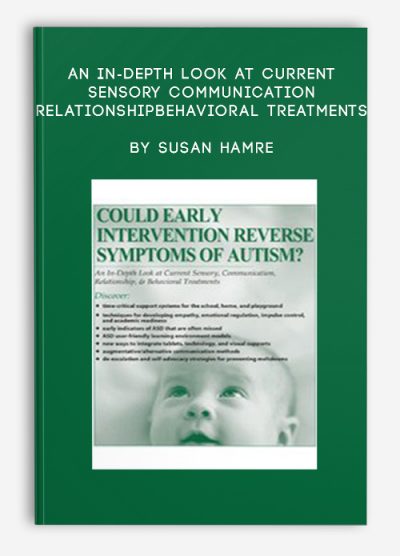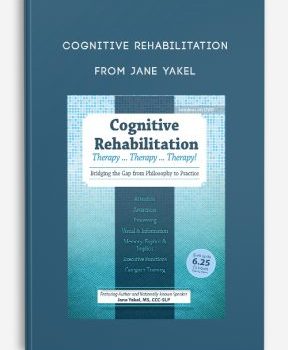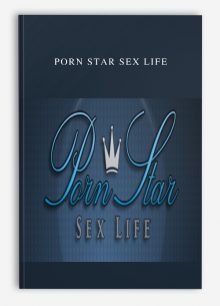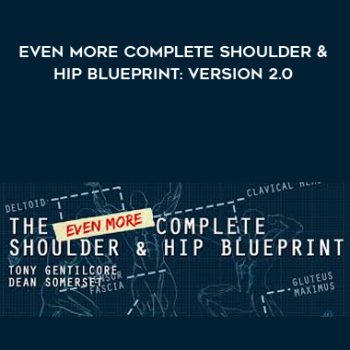 An In-Depth Look at Current Sensory, Communication, Relationship, & Behavioral Treatments by Susan Hamre
An In-Depth Look at Current Sensory, Communication, Relationship, & Behavioral Treatments by Susan Hamre
**More information:
Sale Page
Archive Page
Get An In-Depth Look at Current Sensory, Communication, Relationship, & Behavioral Treatments by Susan Hamre at
Description
Time is not your friend when working with children on the autism spectrum. Recent studies suggest the impact of early intervention can vastly improve outcomes, result in fewer communication and developmental delays, and possibly even eliminate symptoms – but timing is crucial.
This recording is designed to help attendees identify early indicators of ASD that are often missed and build time-critical support systems for fostering academic readiness, empathy, emotional regulation, and impulse control during the most formative years.
Interactive labs, videos, and case studies bring to life an effective multimodal approach as Susan Hamre, director of the Autism Trainer Center near Chicago, demonstrates real world applications and outcomes of today’s most effective early intervention strategies.
OVERVIEW
- Updated definition/clarification of ASD according to the DSM-5®
- Early intervention and bio-markers of ASD
- Latest research on possible causes of ASD
- Impact on families
- Case studies
STAYING CALM IN THE MIDDLE OF THE STORM
- Distinguishing between a meltdown and temper tantrum
- Functions of behavior
- Differential management of meltdowns vs. temper tantrums
- Understanding the trajectory of the storm
- Identify meltdown pre-cursors
- Noting triggers from impacted sensory system or communication challenges
- Calming strategies
- The repair period – post-escalation
- Managing YOU!
- Case studies
THE POWER OF SENSORY INTEGRATION
- Sensory systems impacted
- Neurological processing of input
- Seeking/avoiding sensory stimuli
- Sensory management strategies
- Sensory breaks
- Sensory diets
- Examples of supports
- Case studies
WHERE IS MY VOICE? – COMMUNICATION
- Communication challenges
- Apraxia
- Auditory processing
- Literal translations – black and white interpretations
- Spontaneous (social) language
- Augmentative/alternative communication strategies and cognitive development
- Picture communication system (PECS)
- AAC (iPads, apps, etc.)
- Gestural/ASL
- Scripts
- Choice boards
- Straight talk
- Case studies
ASPECTS OF SOCIAL-EMOTIONAL DEVELOPMENT
- Relationship of social-emotional development on cognition
- 5 features of social-emotional development
- Development of empathy, emotional regulation, and impulse control
- What happens when these skills are delayed or missing?
- How to help?
- Interacting at their level
- Video modeling
- Rules/expectations
- Social stories
- Pictures/sequences
- Engaging with their interests
- Case studies
DON’T UNDERESTIMATE THE IMPACT OF THE ENVIRONMENT
- Challenges (videos)
- Lights – “too busy”/over stimulating/distracting/too bright/“can’t see”
- Sounds – hallway noise/kids voices/ humming from technology/lights buzzing/pencils scratching
- Olfactory sensitivity
- Case study
- Kinesthetic – too crowded/kids touching/bumping in lines/too hot or cold
- Supports
- Organizing spaces
- Lighting adjustments
- Managing temperatures
- What to avoid
CURRENT INTERVENTIONS
- Early intervention
- Treatment strategies for infants and toddlers
- Case studies
- Relationship interventions
- Communication-based interventions
- Behavioral interventions
- Alternative interventions
VISUAL SUPPORTS – NOT JUST ANOTHER GIMMICK
- Who needs them?
- Benefits of using visual supports
- Examples of visual supports
- Case studies
DON’T FORGET MOTIVATION!
- Incorporating interests/fascinations vs. resisting them
- Building a bridge vs. dangling a carrot
- Intrinsic vs. extrinsic motivation
- Don’t allow motivation to rule, but rather to guide
More information about Medical:
Medicine is the science and practice of establishing the diagnosis, prognosis, treatment, and prevention of disease.
Medicine encompasses a variety of health care practices evolved to maintain and restore health by the prevention and treatment of illness.
Contemporary medicine applies biomedical sciences, biomedical research, genetics, and medical technology to diagnose, treat, and prevent injury and disease,
typically through pharmaceuticals or surgery, but also through therapies as diverse as psychotherapy, external splints and traction, medical devices, biologics, and ionizing radiation, amongst others.
Medicine has been around for thousands of years, during most of which it was an art (an area of skill and knowledge) frequently having connections to the religious and
philosophical beliefs of local culture. For example, a medicine man would apply herbs and say prayers for healing, or an ancient philosopher and physician would apply bloodletting according to the theories of humorism.
In recent centuries, since the advent of modern science, most medicine has become a combination of art and science (both basic and applied, under the umbrella of medical science).
While stitching technique for sutures is an art learned through practice, the knowledge of what happens at the cellular and molecular level in the tissues being stitched arises through science.













tristian –
This is Digital Download service, the course is available at Coursecui.com and Email download delivery.